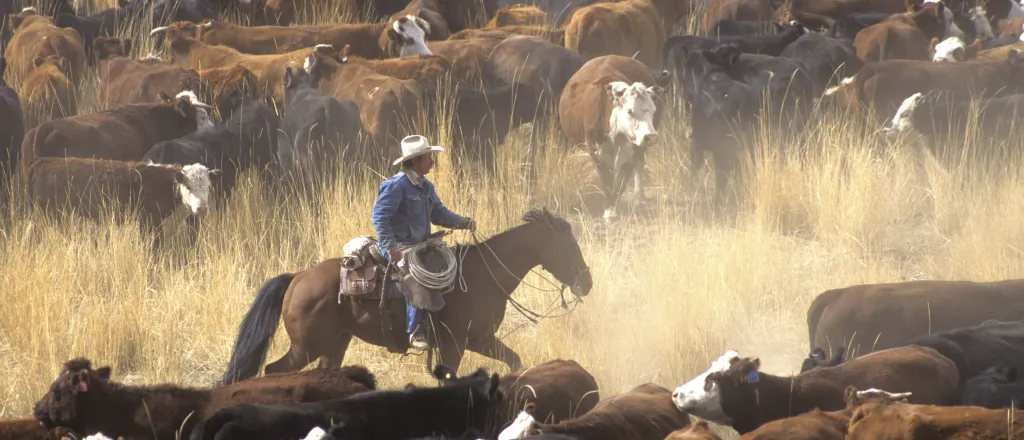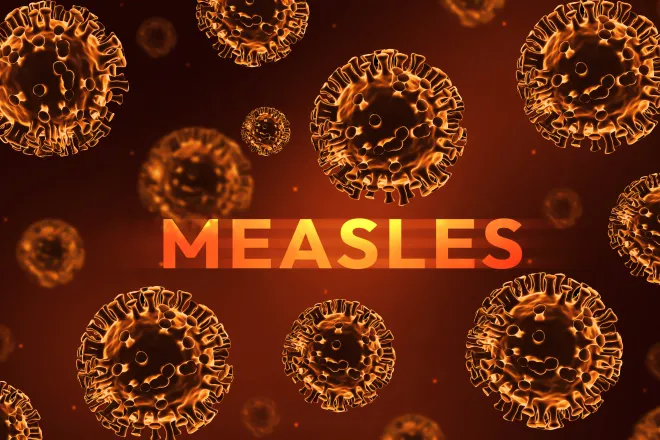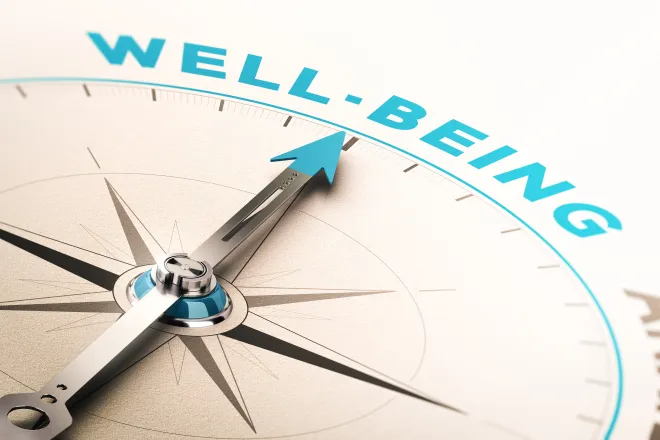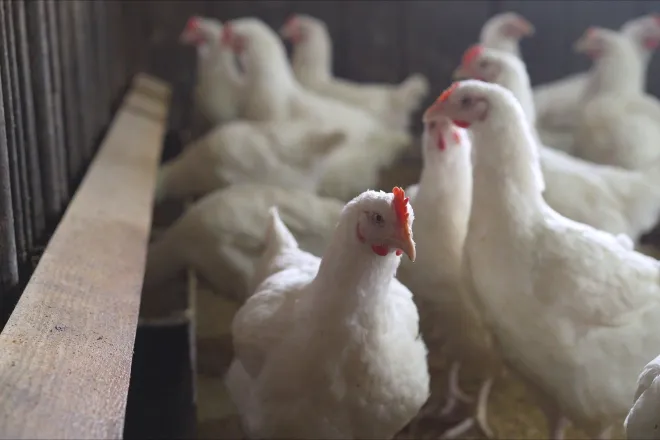
Transcript
Welcome to Pasture to Profit.
I'm Scott Stennett, CSU Extension Specialist here in Kit Carson County.
And today on Pasture to Profit, we have Dr.
Jason Ahola with the Animal Science Department at Colorado State University.
And Dr. Ahola, we did some fun research here a few years back that you're getting about ready to publish on condition of cattle that are brought in to market that are bulls and cows that are coming to the sale facilities.
Can you tell us a little bit about that research?
Yeah, thanks Scott.
And thanks for having me on your program.
The Beef Quality Assurance Program here in Colorado, we really try to focus on what can we do to help producers be more profitable and also increase the value and quality of carcasses, including from cull beef and dairy cows and bulls.
And as many of your listeners would know, upwards of 20 percent of income can come from those culls.
So we tried to focus on can we document the current quality of cull cows and bulls at auction markets to try to get a sense of what opportunities are there for improvement.
And also it's important to realize in Colorado, we're far from most cull cow packing plants.
They're going to be in California, Arizona, Minnesota, Texas.
So these cows have to travel a long ways.
And it's really an expectation of the beef industry to make sure we're putting good cows on a truck.
We went to six different livestock auction markets and looked at 20 something different traits of these cull cows and bulls.
And it was everything from animal welfare types of things, like did they have enough body condition or muscle or locomotion, soundness to be able to get on a truck and survive a thousand mile trip.
Also, it was things like how good of a carcass quality wise or value wise are they going to produce, whether that's are they the proper weight, adequate body condition score, does the animal have brands on it, that sort of thing.
And then also things like carcass safety.
So are animals being shipped that might be condemned for things like cancer eye or wounds or swollen joints or poor health.
And so we basically went in and appreciate the help that you and Travis provided on that.
And we just watched a lot of animals go through livestock auction markets.
And in total, we looked at almost twenty five hundred head of animals and collected all these different variables to try to identify which of the issues are present and which of these issues maybe aren't present.
And what we basically found was the vast majority of these cows, which is mostly what we saw, beef cows and a decent number of dairy cows, that they were in a good status in terms of body weight being between a thousand and sixteen hundred pounds, body condition score being like a four to a seven on the beef scale, that they were sound, that they didn't have a lot of mud on them, that sort of thing.
And that we did not see anything that's kind of not good.
Things like a retained placenta or rectal prolapse, which in the past sometimes has been observed at livestock auction markets.
So that's kind of all the good news.
And then we also did see some opportunities for improvement, which had a lot to do with animals being lightweight, where we saw about seven percent of animals weighing less than a thousand emaciated animals.
We saw somewhere around 12 percent of beef cows that were body condition of three or lower.
So they really would have a hard time traveling a distance and producing a good carcass.
And then locomotion or lameness is the other one where a couple of percent of beef cows had a pretty significant foot or leg injury where they favored that, couldn't keep up with the rest of the animals in their group.
And then we saw a variety of other things from the presence of horns, abscesses, and those kind of things.
So overall, a good report card, but certainly opportunities for improvement.
Yeah, the research that you had, Travis, and I do, I know for my part going to our local sale facility here, I saw some things I had not seen before I'd heard of.
I also saw exactly what you said.
The majority of them were good.
And the curiosity from producers seeing me in the pen with a notepad and a clipboard, and even the people working at the sale facility, they're really interested in what we were collecting.
And I had one of the people working in the back look at my list and goes, "Yep, you're going to see all of that today."
So room for improvement is a great thing.
And so that kind of brings me to kind of the next question I would come up with is, what should producers do based on that information that you've collected?
And how can they improve things to make themselves more profitable?
Yeah, that's a really good question.
And to be clear, on this study, we didn't have enough logistics to be able to collect financial data on all the animals, but to know exactly how much they sold for.
But we actually did a very large study in Idaho, Utah, and California a few years back.
And we were able to document several different areas where there's a very large value associated with these different traits.
And so from that, some of the big take-homes are, can you market animals with an absence of a number of these, we would call them defects, something like lameness or inadequate body condition score, cancer eye?
So one of the things we talk about a lot in beef quality assurance is, can we market those cull animals sooner rather than letting them get a little bit too far down the road and taking a major discount?
So if an animal's got cancer eye this summer, can we early wean her calf and get her down the road before that develops?
Or at least not breed her another year and sell her while it's still pretty minor?
Some other things that can be done is to just simply think about selling some cows straight into the marketplace.
And those are cows with good body condition, maybe even they're a little fat, no defects, and sell those right into the marketplace.
And then maybe some cows that are thin, especially if it's a young female that maybe came up open, maybe somewhat because of just the situation that she's in, she couldn't fend off the older cows to get enough winter feed.
And so if she's a young open cow, she's a great candidate to actually feed out kind of like a fed steer and add a bunch of weight, body condition score and whatnot to her, and then market her when she's got a little bit better carcass.
And there's quite a bit of data that would show the increased body weight and fat and all that is going to pay off.
Interestingly, I just saw an article from CattleFacts that said from like 19... let me think about this, from the year 2000 to 2020, the marketplace paid $141 a head if 100 pounds were added.
And so that was on a cow that like from October, November, who weighed 1200 pounds, and if you held her over till February, March, and she weighed 1300 pounds, you added 100 pounds, the market would pay you $141 a head.
And their point was, that translates to cost of gain of $1.41 a pound.
So can you get a cow to gain a pound for $1.41 or less?
And I would have to think that's going to be feasible in a lot of scenarios, it depends on cost of feed and some of those kind of things.
So there's definitely an opportunity to feed cows, even as much as a fed steer would get.
But the important point there is also, think about not marketing your cows in the fall.
You know, we're all in this part of the country, mostly calving in spring, early summer, we're mostly weaning in, you know, fall.
And most of those co-cows are hitting the market in September, October, November.
And that's the lowest of the year.
So can we hang on to those cows, definitely those ones that are good candidates to get a little bit extra feed, feed them over until February, and if we can do it for this $1.41 cost of gain, it's generally going to pay back and be profitable.
Again, that's going to depend on, you know, is there bunk capacity, cost of feed, and some of those things.
But the other thing I think to think about in addition to, you know, thinking about selling problem cows sooner, and just to circle back on that one, you know, it's either like lameness that's getting worse, health that's declining, cancer that's not going to get better, those kind of things.
So try to sell those earlier.
Think about some candidates that you can feed out.
But also, maybe even in this market, those young females may even be something you might consider breeding.
Just looking at what the value is for a bred female, if you could turn around, breed those females and carry them and sell them to somebody else as a fall calver, could be good value.
I definitely don't think, you know, older cows with some issues, they're not good candidates to breed.
But in this rare market, it does seem like this could be a time to, in addition to maybe thinking about feeding them to slaughter, maybe even feeding them for somebody to bring back into their herd as a replacement.
But I'd say overall, you know, there's many different opportunities.
It's just trying to avoid selling cows with those defects and selling into that direct time of the low part of the market.
And then the other thing, just I think the industry needs to be constantly aware of is on-ranch or on-farm euthanasia.
And if you've missed the window on selling a cow that has massive cancer I, or has yonies or chronic lameness or something, in some circumstances, if there's a local packer and you can sell or direct to them, that's great.
But that's often not an option.
And I think we just need to be very upfront and just say on-ranch, on-farm euthanasia, probably the best in a lot of those cases.
It's not many cows, but the last thing we want to do is put those into the marketplace, put them into a sale barn and have a packer have to condemn them.
And then it's kind of a mess to deal with after that. - I've noticed some of that, especially since we're kind of on this uptake in the cattle market due to just the overall national cattle herd numbers.
This fall, I went early with some coal cows that I had in September, early September, right after Labor Day.
And they were in good condition, you know, body conditions five and six and seven, eight years of age, but were open for me.
And I noticed that they were within 100 to $200 of what bred cows were selling for at that time, just because there was a demand for cow beef. - Yeah. - So kind of to finish this off, you've hit a lot of points today, a lot of different things, a lot of information for our producers to consider.
So if you were to write down the plan for the producer and said, this is the plan, this is everything we do in extension work and through the university is suggested best practices.
What are the big high points to prepare to market what we would consider coal, but they are marketable, harvestable animals?
What are those high points?
What are those bullet points that everybody should remember? - Yeah, great, great question.
And I think, you know, just kind of thinking through what might be on that list, I think one thing that's a good policy is at some level, try to benchmark your production practices.
And so if that's just keeping track of the, you know, something even as simple as weaning weight and feed costs and that sort of thing.
But when we're talking about coal cows, thinking about the quality of the cows that are leaving your place.
And so I don't think you need to be writing down every one of the things that we collected, but I think it's important to consider what are the quality of the cows leaving your place?
And maybe you can, you know, track a little bit in terms of their body condition or some of these major things, their soundness, their lameness, because if you want to improve over time and continuous improvements, a major part of beef quality assurance, you need to track where you are now or benchmark where you are now.
And so if you can say, you know what, I want to try to increase the value and quality of my coal cows, try to track sort of what are their traits this year, what did you sell them for, and then do the same next year.
And so you can have kind of a running list on what's the condition of those cows.
And then I think it gets us to be more aware of our cows.
I'm certainly one of those people to blame for not really keeping track of my cattle.
We've got some cattle at home and, you know, I feed them and manage them, but I don't necessarily stop every day and look and see, are they improving on body condition or declining or what's going on?
And I think just trying to track that.
So I'd say one best practice is to, at some point, try to just maintain some kind of record of what you're doing over time.
And then the other thing I think in terms of the best practice is to sort of plan ahead.
Again, I'm probably an example of, not a good example of that personally, but thinking, you know, we're at summertime right now.
What are we going to market for cows this fall?
When are we going to market them?
Where are we going to market them?
And I think some young females maybe think ahead of time now, where might we go with those females, either to a feed yard or in our own place or on kind of a nice pasture that hasn't been touched yet.
Or maybe we're going to put a bull in with them.
I think the planning ahead too often, me included, we kind of get down the road, don't really think about, you know, what we're going to do until the day's there and the sale barn's open.
We're just going to send them down the road.
But if we can back up just a little bit and plan ahead, it'd be of value, especially looking at these opportunities with the marketplace and just simply the change in market from fall to spring and taking advantage of that.
And then I think the third best practice is to really kind of hold yourself accountable in terms of what you're sending into the beef supply.
And certainly if you send in some cows that have some quality defects, but they're not, you know, horrible, you know, that you're going to get a discount possibly, but, you know, the marketplace will still accept those cattle and that's fine.
But certainly if you have an animal that has, you know, that severe lameness or has just inadequate body condition score, advanced canceri that you missed, whatever that is, just kind of hold yourself accountable on behalf of the industry and say, you know, should I euthanize this animal?
Should I try to sell them locally at a small packer?
But to try to keep that, those really big issues out of the beef supply chain.
You know, a lot of these other things, if you sell a cow that's got a little bit less body condition than she needs ideally, you know, that's just, that's a decision you're going to make based on conditions that are going on.
And there's, that's not a bad thing to do.
It's just, you might be missing out on a premium or taking a discount that you could have avoided.
But I think collectively as an industry, if we can really try to avoid those problems, that seems to be where some issues come up in the industry.
And I think that may be at this point, one of our biggest opportunities to kind of work to collect collectively to get that done.
I think all those are great.
I know from just personal experience and watching things there at our local sale facility.
When I was in my 20s, I had an older producer tell me that it's called a sale barn for a reason.
And his point was that, yeah, a lot of people are just trying to get rid of things.
But if you want to have a good local sale facility, if you bring in quality animals, that will bring in quality buyers and coal cow buyers, coal bull buyers are few and far between.
But if they know you're coming to town with a group of good quality ones that they know they can market and they can be harvested well, it makes such a big difference on the price that you're going to get.
And then you have a reputation for bringing those to town.
And you might actually help your neighbors to increase their quality because they see what you're getting and they'll start following suit because they want the same amount.
So we can kind of help each other by doing that.
You can be the one catalyst at the sale facility.
Yeah.
And just a point on that, it reminds me of something a producer said, this is maybe 30 years ago.
And it's always stuck with me as he said, we fight tooth and nail for a dollar more on our calves in terms of negotiating and trying to get that.
And we just give away our coals.
We just don't even really think about getting a little bit more for them.
But there may probably be even be more opportunity on those coals to try to take advantage of that by sending those good ones to town and letting people know that they're coming so that they can make sure that buyers are aware.
Right, right.
And when it's could be 20 percent of your income for the year, you know, if you're, if you got 100 head and you're turning over 10 head every year, and that's 20 percent of your income, that's pretty significant thing to pay attention to on the old balance books.
For sure.
Agree.
Well, Dr. Ahola, thank you for being with us today.
We appreciate you listening to Pasture to Profit.
If you have any questions or suggestions for our Pasture to Profit podcast, you can contact myself, Scott Stennett here at the Kit Carson County Extension Office at 719-346-5571.
Or you can contact Travis at the Yuma County Extension Office at 970-332-4151.
Thanks again and we hope you'll listen next time on Pasture to Profit.








